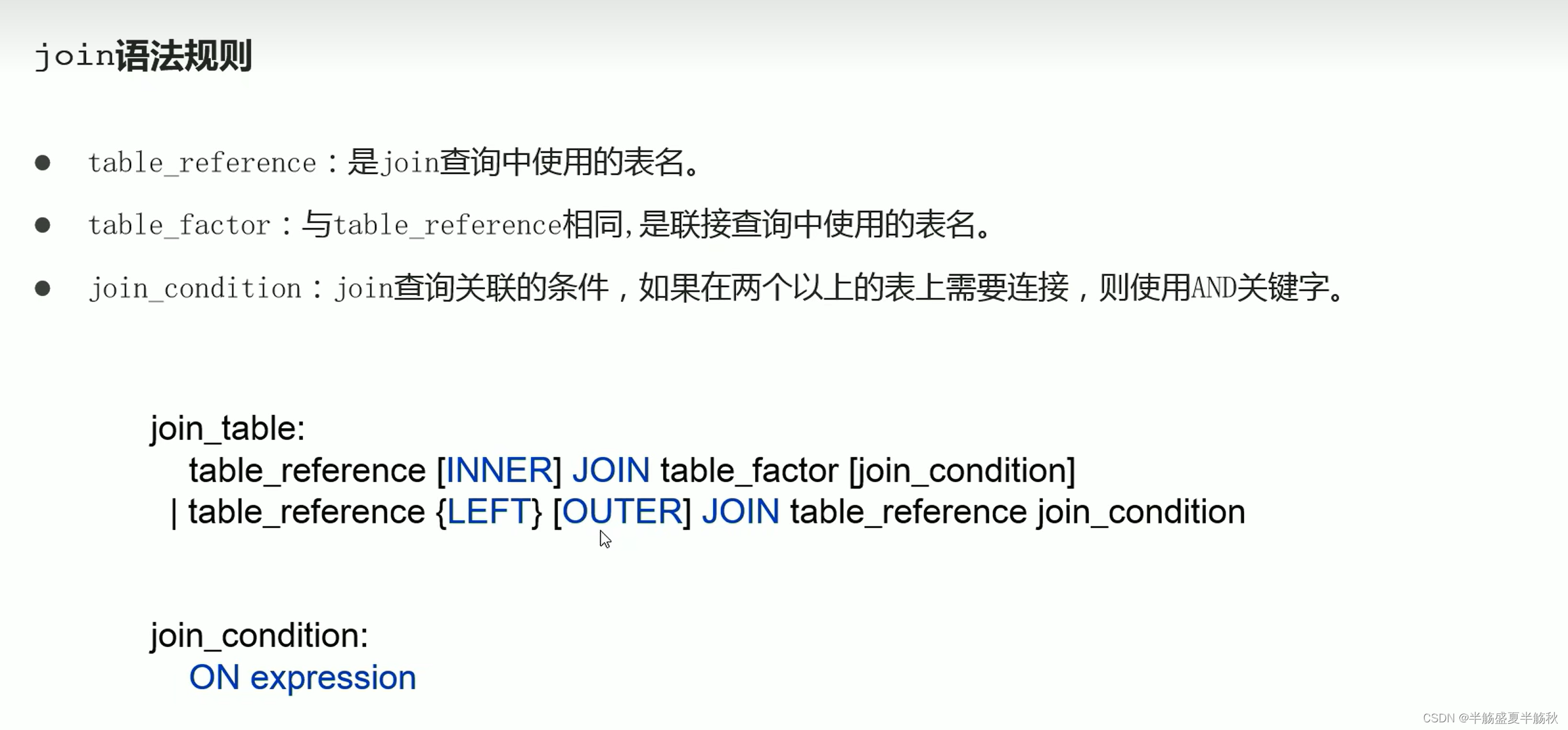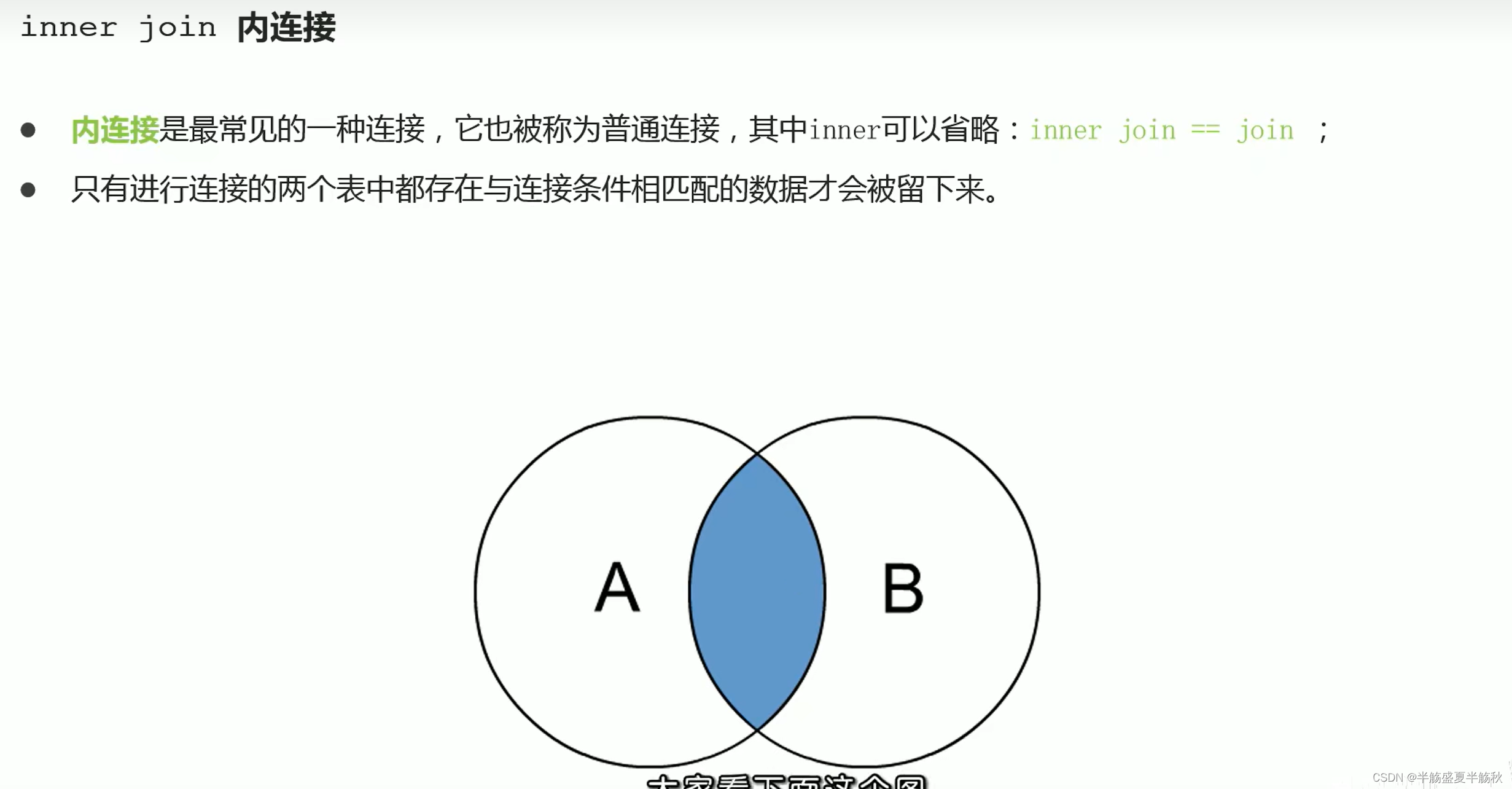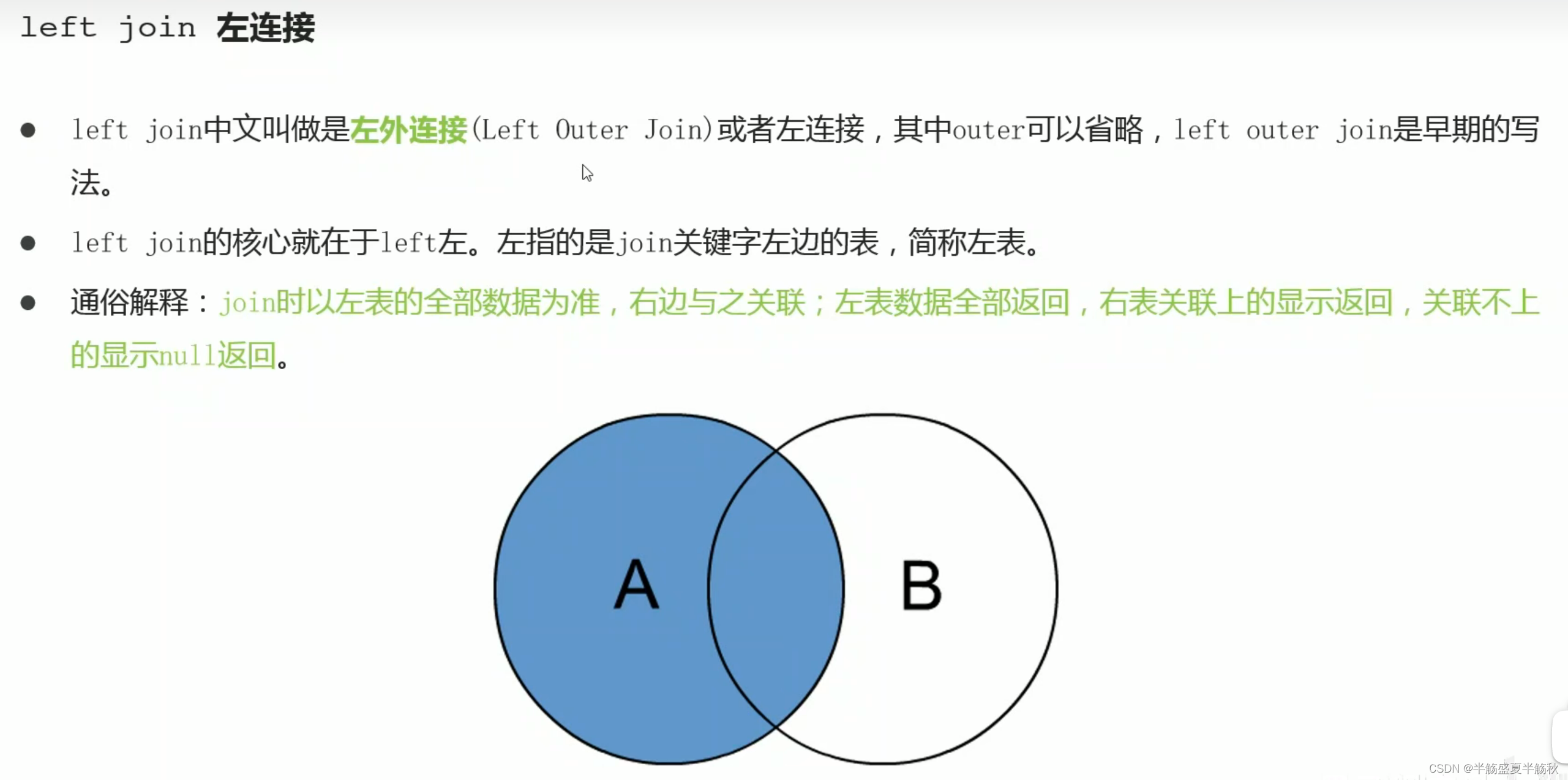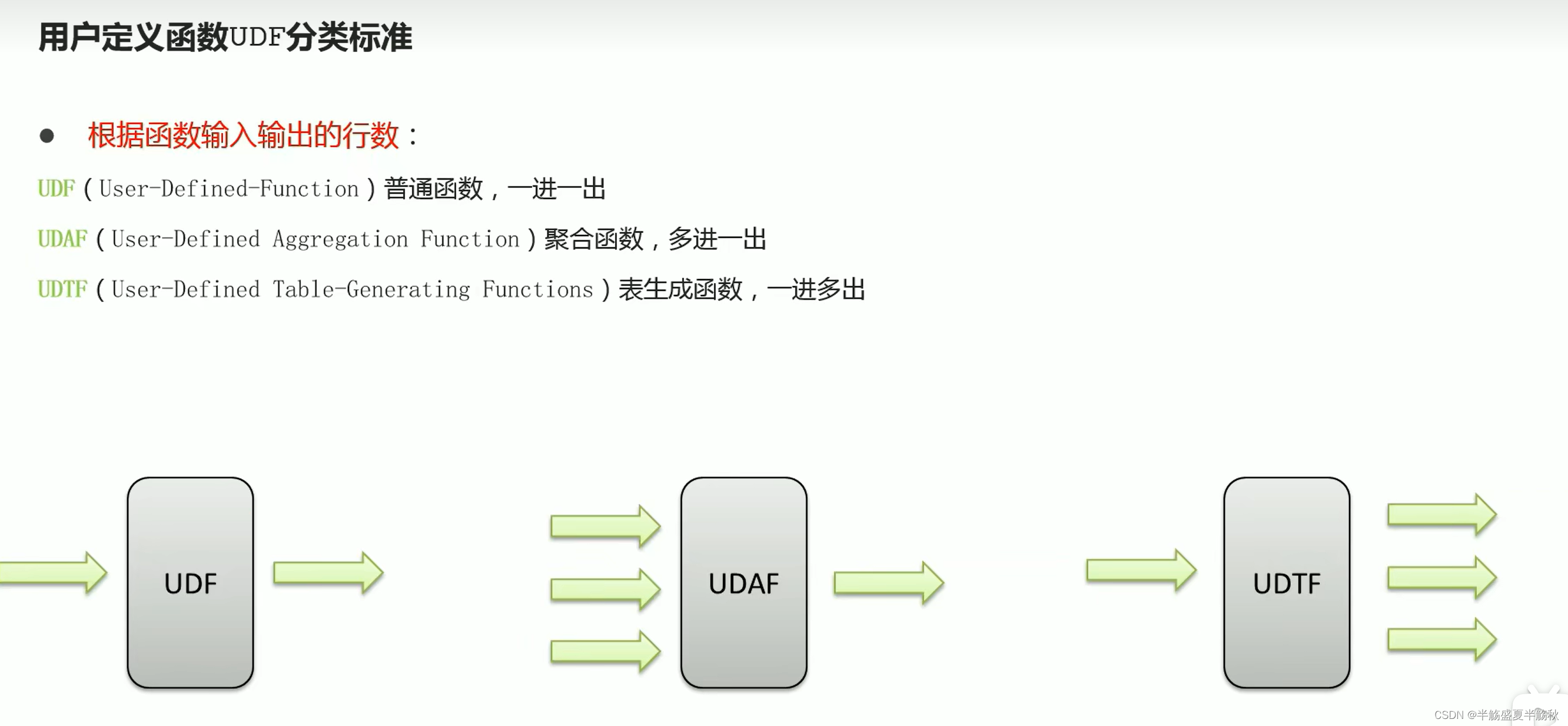1.聚合函数
- 常见的聚合函数:Count、Sum、Max、Min和Avg
- 特点:不管原始数据多少条,聚合之后只有一条
- Count(column)返回某列的行数,不包括NULL值

2.GROUP BY


- select中的字段要么是GROUP BY字段,要么是被聚合函数应用的字段
2.HAVING
- WHERE中无法出现聚合函数,所以有了HAVING
- WHERE是分组前过滤,HAVING是分组后过滤
为什么WHERE中不能使用聚合函数?
- 因为使用WHERE的时候,只能从表格字段中直接查找然后过滤,如果用到计算函数,不是表格现有的直接可以查到的,就不可以作为过滤条件,对于表格现有的 length() 等函数还是可以的
- 而且因为WHERE的执行顺序在GROUP BY之前,而聚合函数只有在GROUP BY之后才能进行,因此WHERE中不能有聚合函数

使用having时一定要注意和select中的某个聚合函数一样,且可以使用其别名。虽然having在select之前,但是就是可以,这样SQL的性能更好,不用执行两遍聚合函数了
3.ORDER BY
- 默认按照升序(ASC),降序使用DESC
select * from t order by name desc, age asc; --先根据name降序,再根据age升序
4.LIMIT
- 用于限制SELECT语句返回的行数
- 接收一个或者两个参数,都是非负整数
- 第一个参数指定要返回的第一行的偏移量,第二个参数指定要返回的最大行数。单个参数时,偏移量默认为0。
5.执行顺序

6.Join

内连接

左连接

7.函数分类(UDF,UDAF,UDTF)
show functions; //查看当下可用的所有函数 describe function extended funcname; //查看funcname的使用


8.常用内置函数
------------String Functions 字符串函数------------ select length("itcast"); select reverse("itcast"); select concat("angela","baby"); --带分隔符字符串连接函数:concat_ws(separator, [string | array(string)]+) select concat_ws('.', 'www', array('itcast', 'cn')); --字符串截取函数:substr(str, pos[, len]) 或者 substring(str, pos[, len]) select substr("angelababy",-2); --pos是从1开始的索引,如果为负数则倒着数 select substr("angelababy",2,2); --分割字符串函数: split(str, regex) --split针对字符串数据进行切割 返回是数组array 可以通过数组的下标取内部的元素 注意下标从0开始的 select split('apache hive', ' '); select split('apache hive', ' ')[0]; select split('apache hive', ' ')[1]; ----------- Date Functions 日期函数 ----------------- --获取当前日期: current_date select current_date(); --获取当前UNIX时间戳函数: unix_timestamp select unix_timestamp(); --日期转UNIX时间戳函数: unix_timestamp select unix_timestamp("2011-12-07 13:01:03"); --指定格式日期转UNIX时间戳函数: unix_timestamp select unix_timestamp('20111207 13:01:03','yyyyMMdd HH:mm:ss'); --UNIX时间戳转日期函数: from_unixtime select from_unixtime(1618238391); select from_unixtime(0, 'yyyy-MM-dd HH:mm:ss'); --日期比较函数: datediff 日期格式要求'yyyy-MM-dd HH:mm:ss' or 'yyyy-MM-dd' select datediff('2012-12-08','2012-05-09'); --日期增加函数: date_add select date_add('2012-02-28',10); --日期减少函数: date_sub select date_sub('2012-01-1',10); ----Mathematical Functions 数学函数------------- --取整函数: round 返回double类型的整数值部分 (遵循四舍五入) select round(3.1415926); --指定精度取整函数: round(double a, int d) 返回指定精度d的double类型 select round(3.1415926,4); --取随机数函数: rand 每次执行都不一样 返回一个0到1范围内的随机数 select rand(); --指定种子取随机数函数: rand(int seed) 得到一个稳定的随机数序列 select rand(3); -----Conditional Functions 条件函数------------------ --使用之前课程创建好的student表数据 select * from student limit 3; --if条件判断: if(boolean testCondition, T valueTrue, T valueFalseOrNull) select if(1=2,100,200); select if(sex ='男','M','W') from student limit 3; --空值转换函数: nvl(T value, T default_value) select nvl("allen","itcast"); select nvl(null,"itcast"); --条件转换函数: CASE a WHEN b THEN c [WHEN d THEN e]* [ELSE f] END select case 100 when 50 then 'tom' when 100 then 'mary' else 'tim' end; select case sex when '男' then 'male' else 'female' end from student limit 3;
- 默认按照升序(ASC),降序使用DESC
- select中的字段要么是GROUP BY字段,要么是被聚合函数应用的字段
猜你喜欢
网友评论
- 搜索
- 最新文章
- 热门文章
